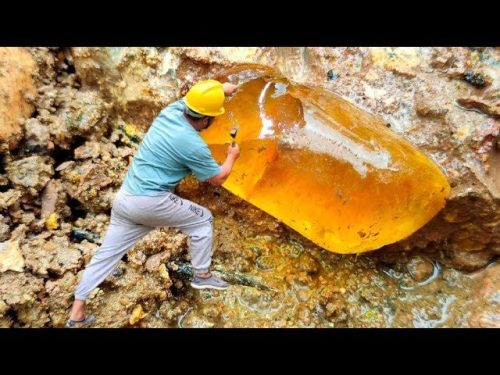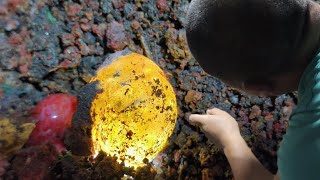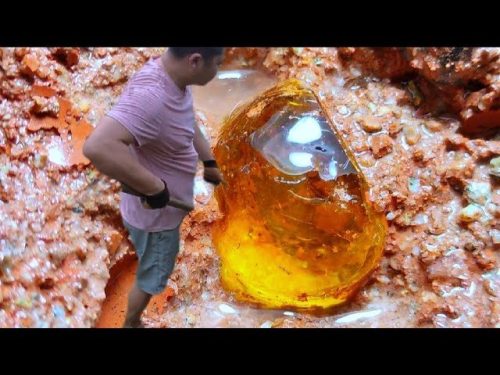
When one thinks of diamonds, the image of a sparkling, colorless gem often comes to mind. However, there exists a rare and mesmerizing variety of diamonds that defy this conventional perception – yellow diamonds. These exquisite gems, with their sunny and vibrant hues, are a treasure hunter’s dream, hidden away in the depths of the Earth’s crust. In this article, we will delve into the fascinating world of yellow diamonds, exploring their formation, characteristics, and the allure they hold for both collectors and enthusiasts.
The Origin of Yellow Diamonds
Yellow diamonds, also known as canary diamonds or yellow fancy color diamonds, are formed deep within the Earth’s mantle, under intense heat and pressure. Their striking yellow color is the result of the presence of nitrogen molecules during their formation process. The unique arrangement of these nitrogen atoms within the diamond’s crystal lattice structure is what gives these gems their remarkable color.

What sets yellow diamonds apart from their colorless counterparts is the presence of trace elements and structural defects that absorb certain wavelengths of light, causing the stone to appear yellow. The intensity of the yellow color can vary, ranging from a pale, subtle hue to a vivid and intense yellow, often referred to as “canary yellow.” The more intense the yellow, the more valuable and rare the diamond becomes.
The Four Cs of Yellow Diamonds
Like all diamonds, yellow diamonds are graded based on the four Cs: Carat weight, Cut, Clarity, and Color.
- Carat Weight: The carat weight refers to the size of the diamond. Larger yellow diamonds are rarer and, therefore, more valuable.
- Cut: The cut of a diamond refers to its shape and the quality of its facets. A well-cut yellow diamond will exhibit brilliance and sparkle, enhancing its overall beauty.
- Clarity: Clarity assesses the presence of internal and external flaws, known as inclusions and blemishes. Flawless yellow diamonds are exceptionally rare and highly sought after.
- Color: Color is the most important factor for yellow diamonds. These diamonds are graded on a scale from Fancy Light Yellow to Fancy Intense Yellow and beyond. The deeper and more saturated the yellow color, the more valuable the diamond.
The Allure of Yellow Diamonds
Yellow diamonds have a unique and captivating allure that sets them apart from their colorless counterparts. Here are some reasons why they are a treasure hunter’s dream:
- Rare Beauty: Yellow diamonds are among the rarest of all colored diamonds. Their scarcity makes them highly coveted by collectors and investors alike.
- Vibrant Color: The vivid yellow hue of these diamonds symbolizes warmth, joy, and optimism. It’s a color that instantly draws attention and leaves a lasting impression.
- Customization: Yellow diamonds are often used in custom jewelry designs. Their distinct color allows for one-of-a-kind pieces that reflect the wearer’s personality and style.
- Investment Value: Due to their rarity, yellow diamonds can be a valuable investment. Their value tends to appreciate over time, making them a wise choice for those looking to diversify their portfolios.
- Celebrity Appeal: Many celebrities have chosen yellow diamonds for their engagement rings, further popularizing these stunning gems. Notable examples include the engagement rings of Heidi Klum and Carrie Underwood.
The Quarry of Discovery
While yellow diamonds are primarily found in mines and not quarries, the journey to discovering these gems is no less intriguing. Some of the world’s most renowned yellow diamond mines include the Argyle Diamond Mine in Australia, the Cullinan Mine in South Africa, and the Ellendale Mine, also in Australia. These mines have yielded some of the most exceptional yellow diamonds known to the world.

Caring for Yellow Diamonds
To preserve the beauty and brilliance of yellow diamonds, proper care is essential. Here are some tips for maintaining these precious gems:
- Gentle Cleaning: Clean your yellow diamond jewelry with a soft brush, mild detergent, and warm water. Avoid harsh chemicals or abrasive materials.
- Regular Inspections: Have your yellow diamond jewelry inspected by a professional jeweler regularly to ensure the settings are secure and the diamond is in good condition.
- Storage: Store yellow diamond jewelry separately from other pieces to prevent scratches. Use a soft cloth or jewelry pouch to protect them.
- Avoid Contact with Chemicals: Remove your yellow diamond jewelry when using household chemicals, as they can dull the stone’s luster.
In conclusion, yellow diamonds are a true treasure hunter’s dream, with their mesmerizing color, rarity, and enduring appeal. Whether you are an avid collector, an investor, or someone seeking a unique symbol of love and joy, yellow diamonds are a testament to nature’s beauty and the wonders that lie beneath the Earth’s surface. Their timeless allure will continue to captivate hearts and minds for generations to come, making them a precious gemstone worth celebrating and cherishing.






